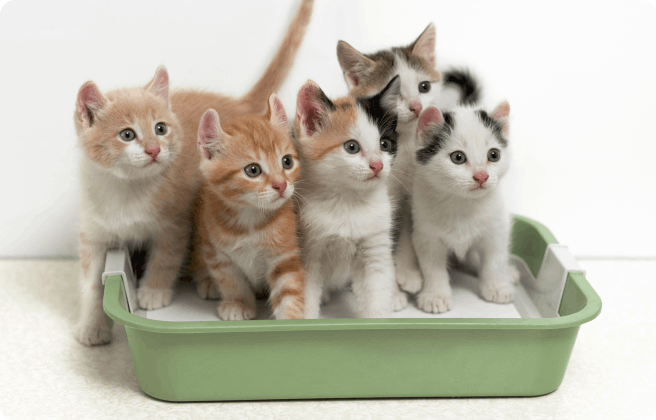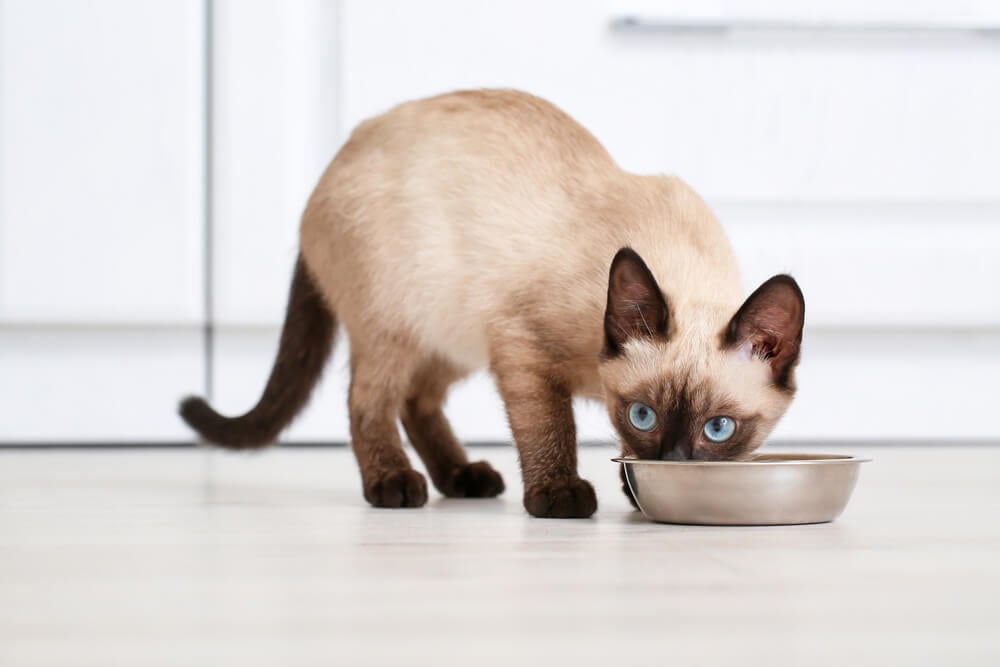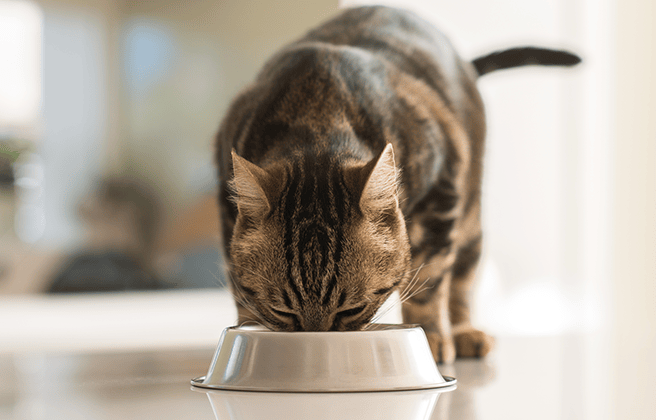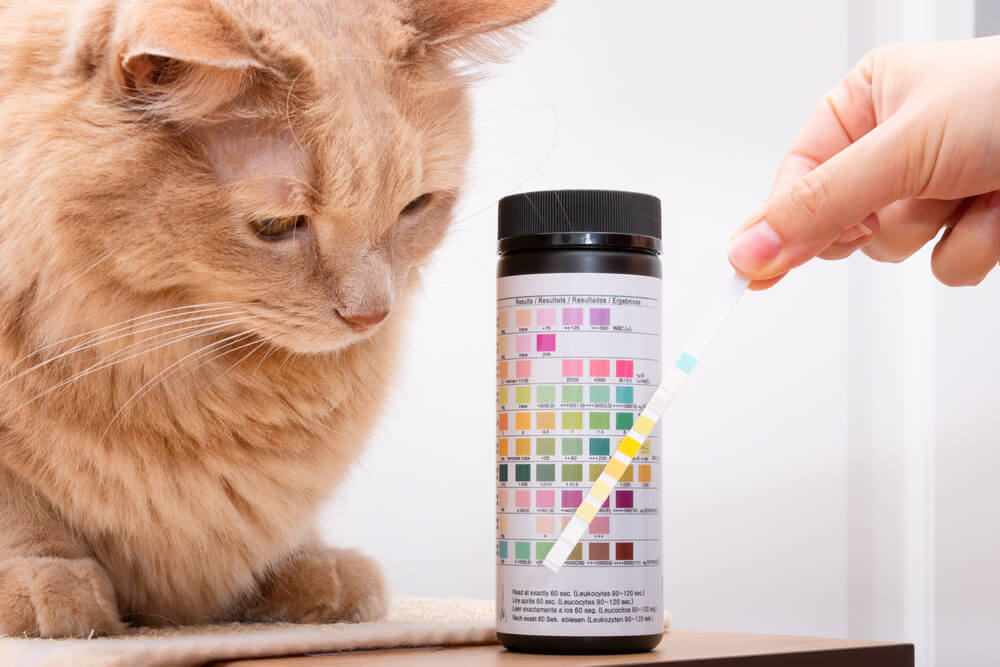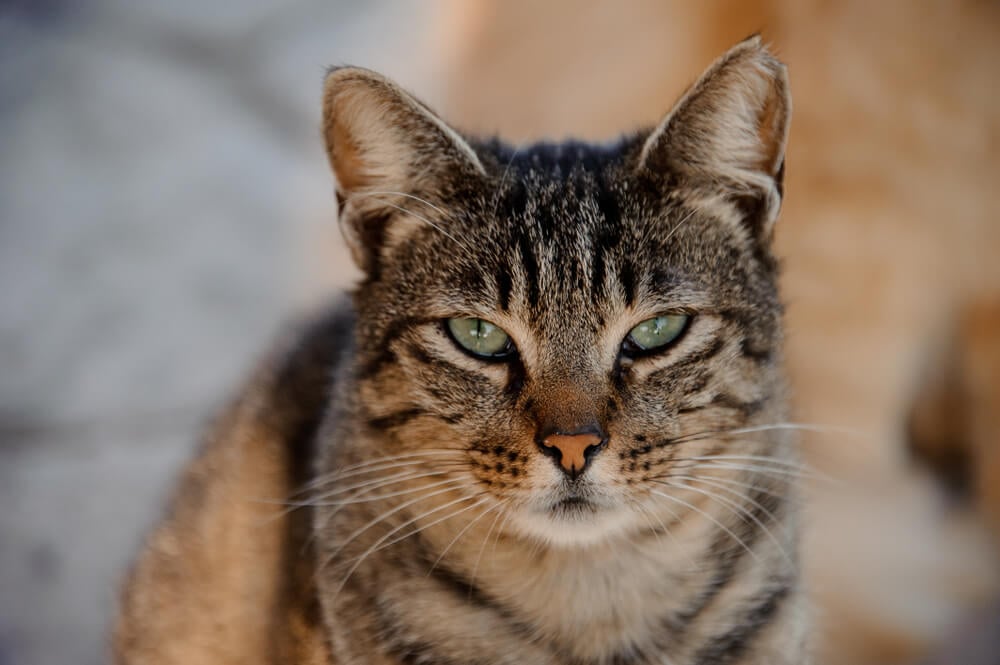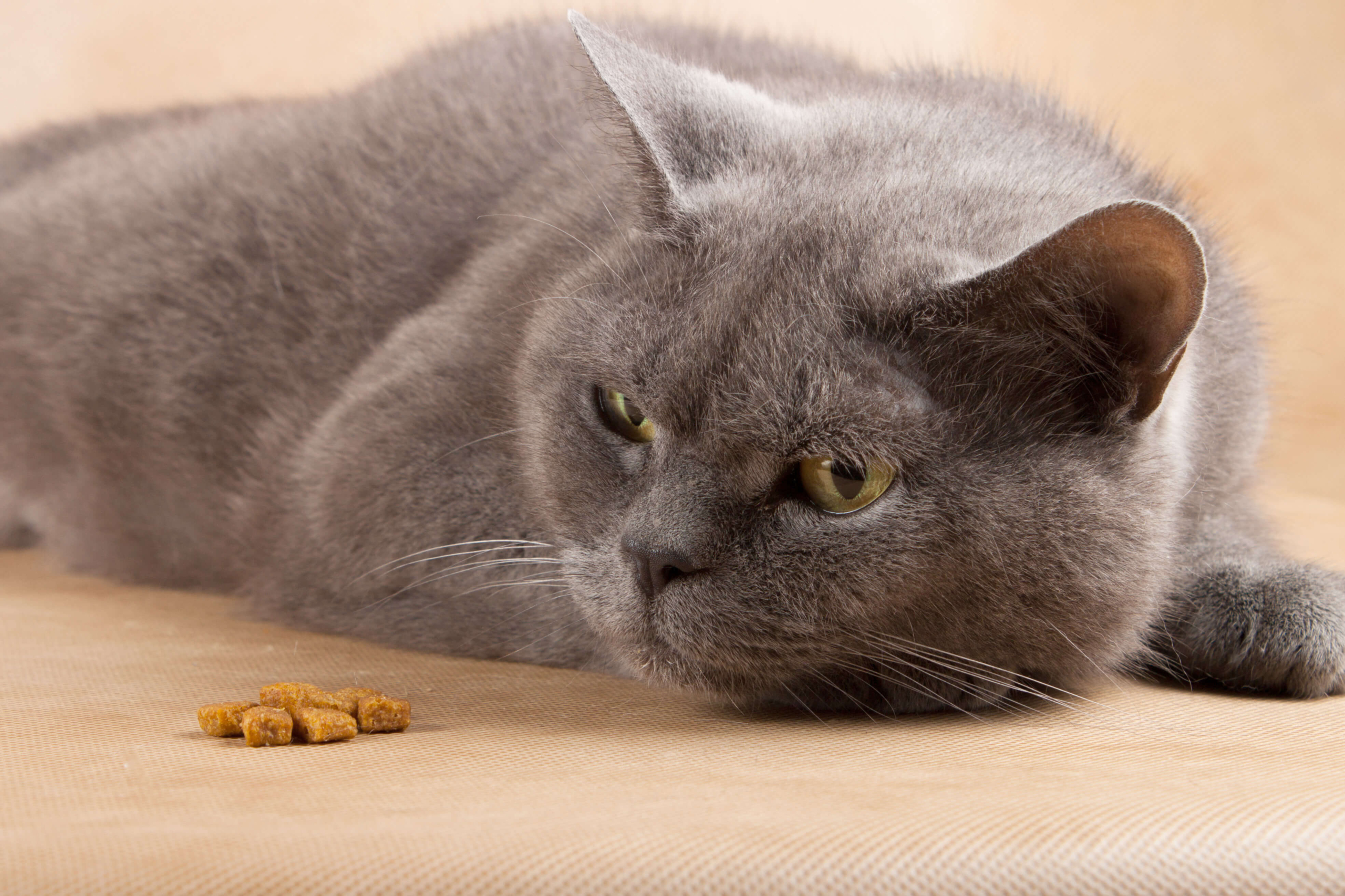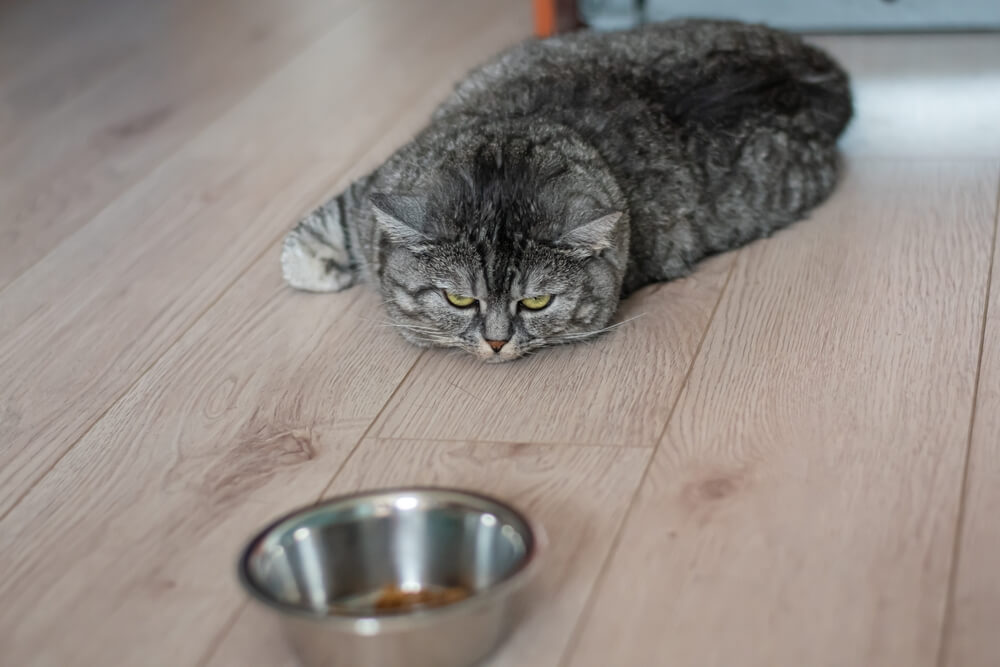
There are certain ingredients that you may want to avoid in cat food to ensure your pet receives a balanced and nutritious diet. Below are some ingredients to be cautious about:
What are fillers and why are they bad in cat food?
Look out for cat foods that contain excessive amounts of fillers such as corn, wheat, and soy. These ingredients are generally considered undesirable because they contribute little to no nutritional value for cats and can potentially lead to health issues.
Cats are obligate carnivores, which means they have evolved to thrive on a diet primarily composed of animal-based protein.
Fillers are often used as inexpensive sources of carbohydrates and can displace the more nutrient-dense ingredients that cats need to thrive.
Cats have a relatively short digestive tract optimized for processing animal-based proteins. Fillers, especially those derived from grains, can be difficult for cats to digest properly which can lead to gastrointestinal issues, such as indigestion, flatulence, and diarrhea.
Diets high in carbohydrates, including fillers, can contribute to obesity and diabetes in cats. Excessive carbohydrate consumption can cause spikes in blood sugar levels, potentially leading to insulin resistance and diabetes over time.
Fillers often lack the satiating effect that protein and fat have on cats. Cats may overconsume calorie-dense, filler-rich foods in an attempt to satisfy their nutritional needs, leading to excessive weight gain.
Some cats may develop allergies or sensitivities to certain filler ingredients, leading to skin issues, gastrointestinal upset, and other health problems.
Dry cat foods that contain excessive fillers might not provide the mechanical cleaning action that some high-protein diets offer. Chewing on dry kibble helps reduce tartar buildup on teeth, which is important for dental health.
Cats have a relatively low thirst drive and are designed to get much of their moisture intake from their food. Canned or wet cat foods with higher protein content can help maintain better hydration compared to dry foods with significant filler content.
What artificial additives are in cat food and why are they bad?
Avoid cat foods with artificial colors, flavors, and preservatives. These artificial additives can be potentially harmful to cats for several reasons
Cats can develop allergies or adverse reactions to these substances. Allergic reactions can manifest as skin issues, gastrointestinal problems, or other health concerns.
Artificial additives might disrupt the delicate balance of a cat’s digestive system, leading to gastrointestinal disturbances like vomiting, diarrhea, or reduced appetite.
Some artificial additives may contain chemicals that are not well-tolerated by cats and can even be toxic in higher quantities. For example, some food coloring agents have been associated with health issues in both cats and humans.
Artificial colors and flavors may affect a cat’s behavior and temperament. Some cats might become more hyperactive or agitated due to the presence of certain additives.
Some preservatives used in cat food, such as BHA (butylated hydroxyanisole) and BHT (butylated hydroxytoluene), have raised concerns about potential long-term health effects. These additives are used to extend shelf life but have been associated with certain health risks.
Cat foods with a heavy reliance on artificial additives might be an indication of lower-quality ingredients or processing methods. These foods may lack the essential nutrients and high-quality protein that cats need for optimal health.
Artificial flavors can mask the taste of low-quality ingredients, potentially leading cats to consume foods that they would otherwise avoid. This could result in imbalanced or inadequate nutrition.
What are by-products and why are they bad for cats?
By-products in cat food are a topic of debate among pet parents and experts. While not all by-products are necessarily “bad,” there are reasons why some pet owners prefer to avoid them or carefully consider their use in cat food:
By-products can encompass a wide range of animal tissues, including organs, skin, and bones. The nutritional quality of by-products can vary depending on the source and processing methods. Some by-products might be nutritionally rich, providing essential nutrients like vitamins, minerals, and amino acids, while others might have lower nutritional value.
The term “by-products” is also not very specific, and it doesn’t clearly indicate which parts of the animal are being used. Without more detailed labeling, it’s difficult to determine the quality and appropriateness of the ingredients for a cat’s diet.
Cats are obligate carnivores, meaning they have evolved to primarily consume animal tissues, particularly muscle meat. While some by-products, such as organ meats, can be nutritious, a diet that relies heavily on non-muscle tissues might not fully meet a cat’s nutritional needs.
Some by-products might be less digestible for cats compared to muscle meat. Digestibility is important for nutrient absorption and overall gastrointestinal health.
The Cat Food Advisor team prefers to see specific protein sources listed on the ingredient label (e.g., “chicken,” “turkey”) rather than generic terms like “by-products.” This transparency helps cat parents make more informed decisions about their pet’s diet.
It’s important to note that not all by-products are low-quality or inappropriate for cat food. In fact, some by-products can be nutritious and valuable components of a cat’s diet. High-quality cat food manufacturers carefully select and process by-products to ensure they provide essential nutrients.
When evaluating cat food that contains by-products, it’s a good idea to consider the overall quality of the food, the transparency of the labeling, and the reputation of the manufacturer. Reading ingredient labels, understanding the nutritional needs of your cat, and consulting with a veterinarian can help you make informed decisions about the best diet for your feline companion.
Why is cat food with excessive carbohydrates bad for cats?
Excessive carbohydrates in cat food can be problematic for several reasons.
Cats require certain essential nutrients, such as taurine and arachidonic acid, that are primarily found in animal tissues. A diet high in carbohydrates can displace the animal proteins and fats that provide these vital nutrients, potentially leading to nutritional deficiencies.
Cats are not well-equipped to handle large amounts of carbohydrates in their diet. High-carbohydrate diets can lead to spikes in blood sugar levels, which over time can contribute to insulin resistance and increase the risk of diabetes.
Diets high in carbohydrates can contribute to weight gain and obesity in cats. Unlike dogs, cats do not have a strong natural instinct to regulate their food intake, so they may overconsume calorie-dense foods.
Cats may have difficulty digesting large quantities of carbohydrates, leading to gastrointestinal issues such as indigestion, flatulence, and diarrhea.
Cats may eat more in an attempt to satisfy their nutritional needs when consuming carbohydrate-rich foods, leading to excessive weight gain.
Dry cat foods that are high in carbohydrates may not provide the same mechanical cleaning action as higher-protein diets. Chewing on dry kibble helps reduce tartar buildup on teeth, which is important for dental health.
Cats have a relatively low thirst drive and are designed to obtain much of their moisture intake from their food. Wet or canned cat foods with higher protein content can help maintain better hydration compared to dry foods with excessive carbohydrate content.
When selecting cat food, it’s important to prioritize high-quality options that are rich in animal-based proteins and have a minimal amount of carbohydrates. Look for foods that are labeled “complete and balanced” and are specifically formulated to meet the nutritional needs of cats.
What unspecified protein sources are there in cat food and why are they bad?
Cat food should clearly state the protein source, such as chicken, turkey, beef, or fish. Be cautious of generic terms like “meat” or “poultry,” as these may not provide sufficient information about the protein quality.
Ingredients like xylitol can be toxic to cats and should be avoided.
Excessive salt (sodium) can lead to health issues in cats, so it’s best to choose cat foods with a moderate salt content.
Ensure that the cat food is nutritionally complete and balanced, providing essential nutrients like taurine, which is crucial for a cat’s health
It’s important to read ingredient labels and choose high-quality cat foods that list specific protein sources, essential nutrients, and have a good balance of ingredients. Consulting with your veterinarian can also help you make the best choices for your cat’s individual needs and dietary requirements.
We uphold the highest editorial standards when creating the authoritative content pet parents rely on and trust.
Every piece of clinical content on the Cat Food Advisor is reviewed by our certified Veterinary Advisory Board, which consists of licensed veterinarians and medically certified specialists.
Our reviews are completely independent; we are not paid by any pet food company to promote their products favorably. We do not accept money, gifts, samples or other incentives in exchange for special consideration. For more information see our Disclaimer & Disclosure page.




